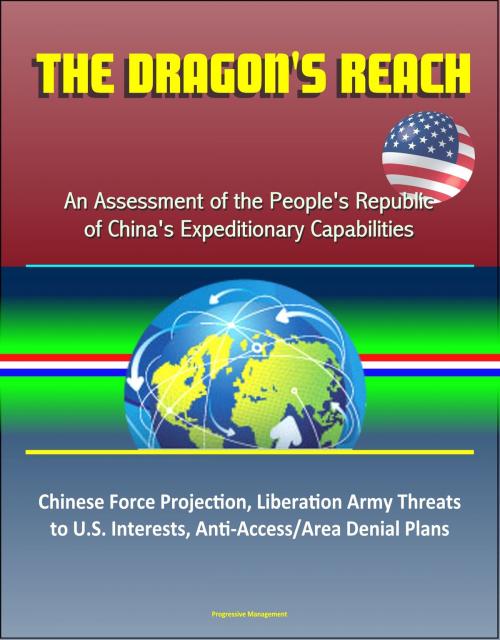The Dragon's Reach: An Assessment of the People's Republic of China's Expeditionary Capabilities – Chinese Force Projection, Liberation Army Threats to U.S. Interests, Anti-Access/Area Denial Plans
Nonfiction, History, Asian, China, Military, Strategy| Author: | Progressive Management | ISBN: | 9781370291663 |
| Publisher: | Progressive Management | Publication: | March 1, 2017 |
| Imprint: | Smashwords Edition | Language: | English |
| Author: | Progressive Management |
| ISBN: | 9781370291663 |
| Publisher: | Progressive Management |
| Publication: | March 1, 2017 |
| Imprint: | Smashwords Edition |
| Language: | English |
This excellent report has been professionally converted for accurate flowing-text e-book format reproduction. When reading security related journals and newspapers on China, the spectre of China's rising military comes to the forefront. While some of these articles can be written off as sensational, the potential for a Chinese military threat is not absurd. Currently, China's Anti-Access/Area Denial capabilities have many military planners scrambling to figure out ways counter them. However, a more significant threat to US national interests may come in the form of China's force projection capabilities. Although some analysts look to the increased Chinese military spending as the only indicator needed to judge China's capabilities, the true ability is more difficult to recognize. Using the concepts and evaluation criteria from Revolution of Military Affairs and Doctrine, Organization, Training, Materiel, Leadership and Education, and Personnel and Facilities this study identifies China's current force projection capabilities and the leading indicators that China needs to progress further.
Western fears of China originated with the establishment of a communist government under Mao Zedong in 1949. Since that time, the United States and China have had a very complex relationship that ranged from open armed conflict during the Korean War to close trading partners today. While one may assume the relationship has improved dramatically due to the vast amount of trade between the United States and China, there is still a growing concern within the US security apparatus over China's intentions.
These primary concerns revolve around China's lack of transparency and openness in regards to her increased military expenditures. Additionally, China's aggressive nature such as impeding movement of US Navy vessels in the South China Sea, as well as a Chinese fishing trawler ramming a Japanese Coast Guard vessel in the East China Sea further increases concerns over China's increased military expenditures. The combination of this growing military threat and uncertainty possesses significant implications for the United States.
This excellent report has been professionally converted for accurate flowing-text e-book format reproduction. When reading security related journals and newspapers on China, the spectre of China's rising military comes to the forefront. While some of these articles can be written off as sensational, the potential for a Chinese military threat is not absurd. Currently, China's Anti-Access/Area Denial capabilities have many military planners scrambling to figure out ways counter them. However, a more significant threat to US national interests may come in the form of China's force projection capabilities. Although some analysts look to the increased Chinese military spending as the only indicator needed to judge China's capabilities, the true ability is more difficult to recognize. Using the concepts and evaluation criteria from Revolution of Military Affairs and Doctrine, Organization, Training, Materiel, Leadership and Education, and Personnel and Facilities this study identifies China's current force projection capabilities and the leading indicators that China needs to progress further.
Western fears of China originated with the establishment of a communist government under Mao Zedong in 1949. Since that time, the United States and China have had a very complex relationship that ranged from open armed conflict during the Korean War to close trading partners today. While one may assume the relationship has improved dramatically due to the vast amount of trade between the United States and China, there is still a growing concern within the US security apparatus over China's intentions.
These primary concerns revolve around China's lack of transparency and openness in regards to her increased military expenditures. Additionally, China's aggressive nature such as impeding movement of US Navy vessels in the South China Sea, as well as a Chinese fishing trawler ramming a Japanese Coast Guard vessel in the East China Sea further increases concerns over China's increased military expenditures. The combination of this growing military threat and uncertainty possesses significant implications for the United States.















